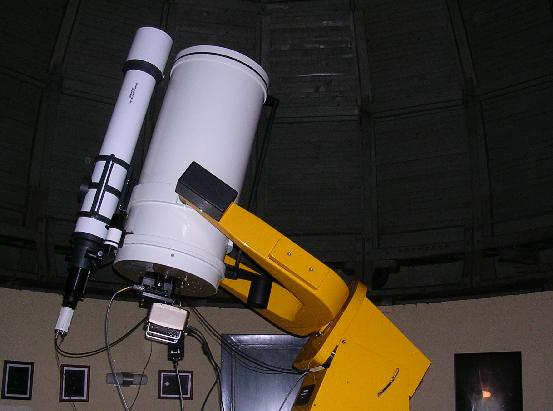

We are pleased to announce the installation of UA's new telescope in the observatory atop Gallalee Hall. This new 16-inch (0.4-meter) reflector replaced the venerable 10-inch refractor which had been in use from 1950-2004. It is equipped for a wide range of public-education and training activities.
|
 |
The telescope is equipped with a range of auxiliary equipment:
A control room beneath the observatory dome is set up for data taking with the CCD and webcam, video from the guide scope, and remote pointing and focus of the telescope in all modes.
Here are some sample images from our early use of the telescope. These are the kinds of images regularly taken by students in the Astronomy 203 (Observational Astronomy) course. Each image links to a full-sized version. More recent results from the telescope may be seen here.
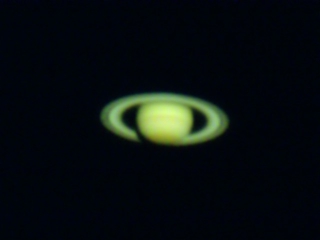 |

|
| Saturn, 28 Mar 2005 | Sunrise on lunar crater Copernicus |
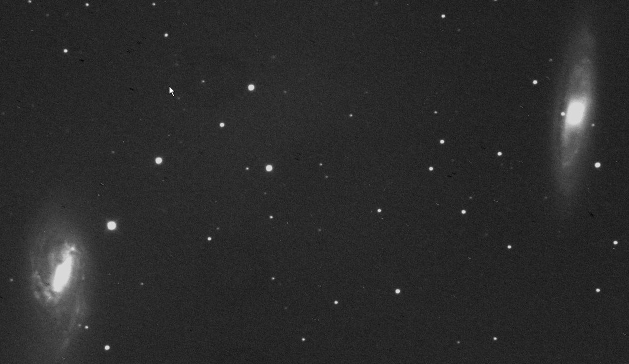 |
Galaxy pair M65/M66 (NGC 3623/3627). This is a total of 16 minites' exposure through a red filter, showing off the camera's wide field of view. Read more: M65 M66. |
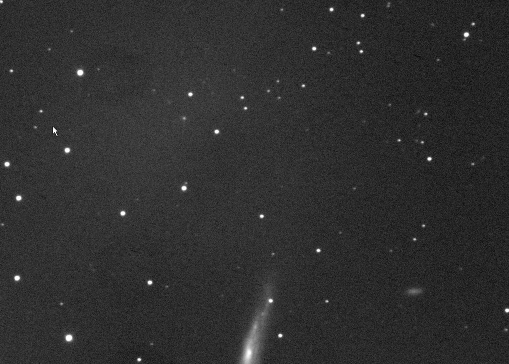
| Edgewise spiral galaxy NGC 3079 and satellite galaxy (bottom), and gravitationally lensed double quasar images Q0957+561 at top right. Red-light image, 24-minute total exposure. Read more about the double quasar. |
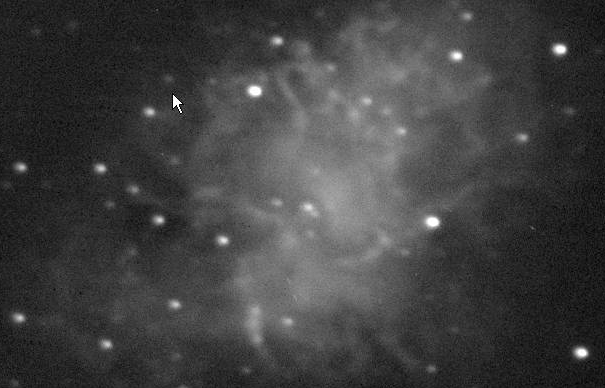 |
Red-filtered image of the Crab Nebula, the remnant of a supernova explosion seen in A.D. 1054. Faintly visible near its center is the pulsar, a tiny spinning neutron star whose magnetic field continues to accelerate the nebula's expansion. Read more about the Crab. |
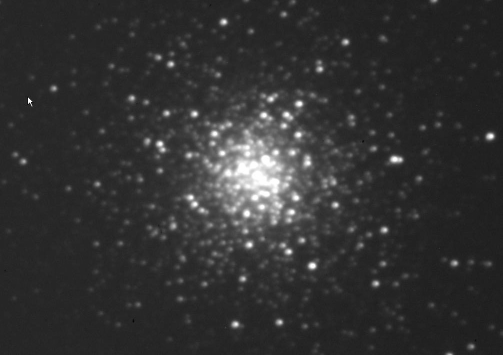 |
Globular star cluster Messier 3 in the constellation Canes Venatici, from 12 minutes' exposure in red light. Read more about M3. |
The astronomers and students at UA owe debts of gratitude to the Dean and department chairman for supporting this major upgrade, and to Danny Whitcomb, Tom Hunter, Jason Taylor, and David Key for wide-ranging support in removing the old telescope, preparing the site, and making the site safer and more convenient for use.
The University of Alabama Astronomy Group also maintains telescopes under the darker skies of Moundville Archaeological Park, which are used both for classes and occasional public events. The astronomy viewing location is marked on this map.
(ostentatious throat-clearing) "The views, opinions, and conclusions expressed in this page are those of the author and not necessarily those of The University of Alabama or its officers and trustees. The content of this page has not been reviewed or approved by The University of Alabama, and the author is solely responsible for its content. "
keel@bildad.astr.ua.eduLast changes: May 2006